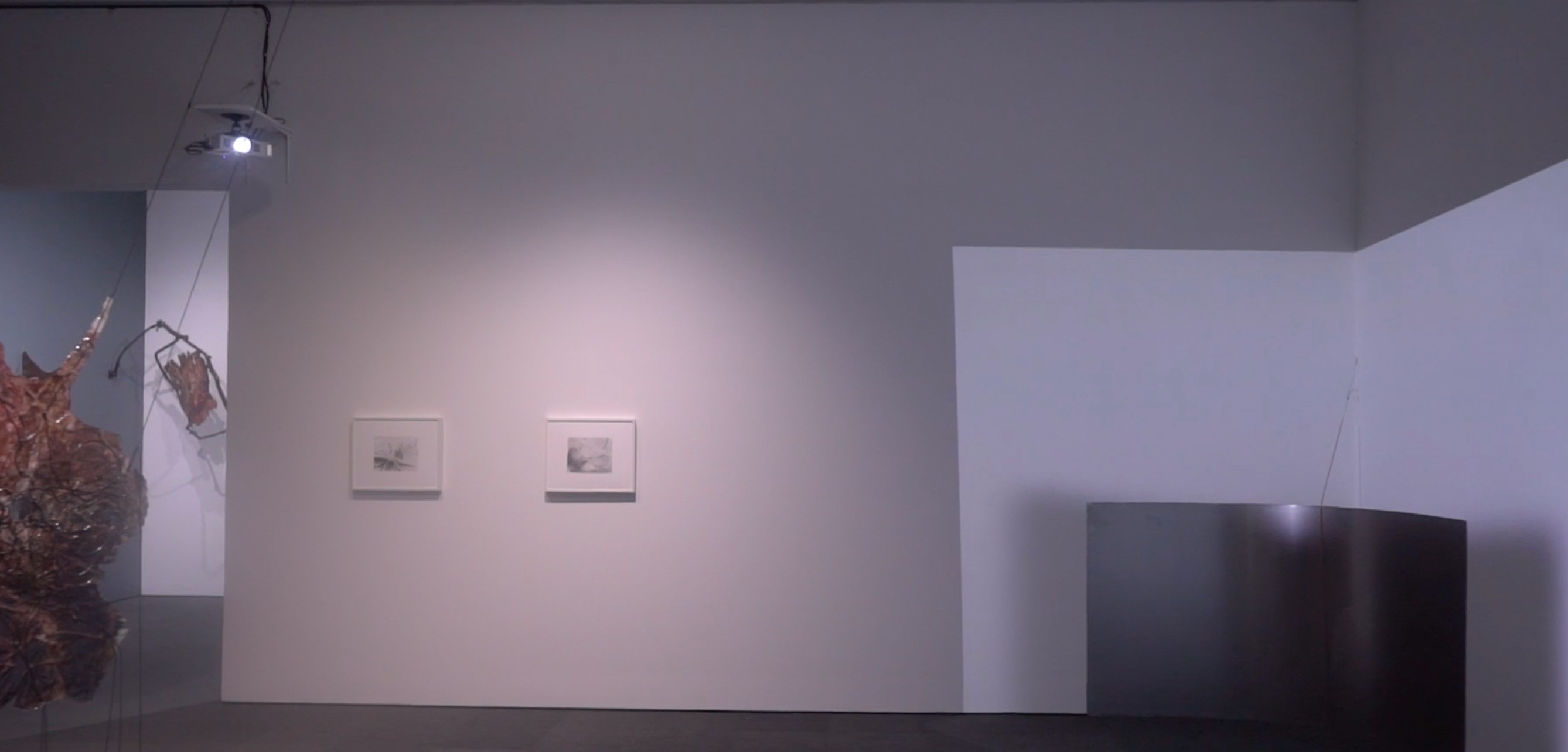
- Rachel Vera Steinberg
In his short science-fiction story “The Great Silence,”1 the author Ted Chiang calls attention to humans’ desire to make contact with other forms of intelligent life by focusing on the Arecibo Observatory in Puerto Rico. When pointed between stars, the Arecibo telescope transmits what Chiang describes as “a faint hum,” made up of reverberations from the big bang. Even when processed using highly developed technology, the sound—which contains information about the universe’s creation—is barely audible to humans.
Bringing together a new commission by Luba Drozd (b. 1982), photographs by Katherine Hubbard (b. 1981), a video installation by Christoph Kilian (b. 1983), sculptures by Vanessa Thill (b. 1991), and writing by Aristilde Kirby (b. 1991), A faint hum uses science fiction to explore knowledge that can be sensed but that lives just outside comprehension. The exhibition identifies the capacity of familiar language and objects, as used by both science fiction and contemporary art, to provide access to the unknown.
Distinct from other forms of speculative fiction such as horror, fantasy, and mystery, science fiction uses ascertainable logics and their practical and mechanical applications to craft narratives that propose future or parallel trajectories of existence. Much like contemporary art, these stories are most cogent when they use fiction or other leaps of the imagination to call attention to unnoticed details of lived experience.
As an exhibition, A faint hum is a speculative environment in which such narratives can germinate, offering the possibility of accessing the experience of a different type of intelligence without decoding it. To accomplish this task, the exhibition employs an operation used by science-fiction narratives wherein a place or situation that a reader couldn’t have experienced is described. Centering on the artworks’ visual, sonic, and material effects as well as their display conditions shifts the timeline from a past that determines a present to a present that determines a future.
The artworks are composed of familiar objects and forms—such as piano strings, silver gelatin photographs, tree branches, and landscape videos—but each remains strange, resisting explicit identification of its process or rationale. Importantly, none of the works contain a science-fiction narrative. Instead, the artworks of A faint hum act as clues to the logic of an alternate ordering system by presenting fragments that give evidence of a specific place.
Hubbard’s mysterious crystalline photographs are the result of a material encounter produced by freezing negatives in water at incremental angles between zero and ninety degrees, then projecting light through the ice. Kilian’s If you touch me, you’ll understand what happiness is (2017) is formed from the debris of an experiment conducted in collaboration with snow scientists, in which he produced the conditions to create a single snow crystal that was then released over the Los Angeles landscape. Both works introduce technological processes that divulge only their current material constraints, assuring that a specific logic is indeed present, but not revealed.
Using piano strings, animated projection, sheet metal, micro-controllers, motors, and drywall, Drozd’s new installation yearns for a synesthetic equalization of matter. Her materials blend with the surrounding architecture, existing fluidly between their visual and sonic functions. Thill’s sculptures appear as structured skins, concocted out of a vast array of substances sold at discount retailers, such as Fabuloso cleaning fluid, powdered pigments, and fake blood. It is between the discrete textures and processes of each work that another world and temporality begins to take shape.

-
This story was originally developed for a video work in collaboration with the artists Allora & Calzadilla.








